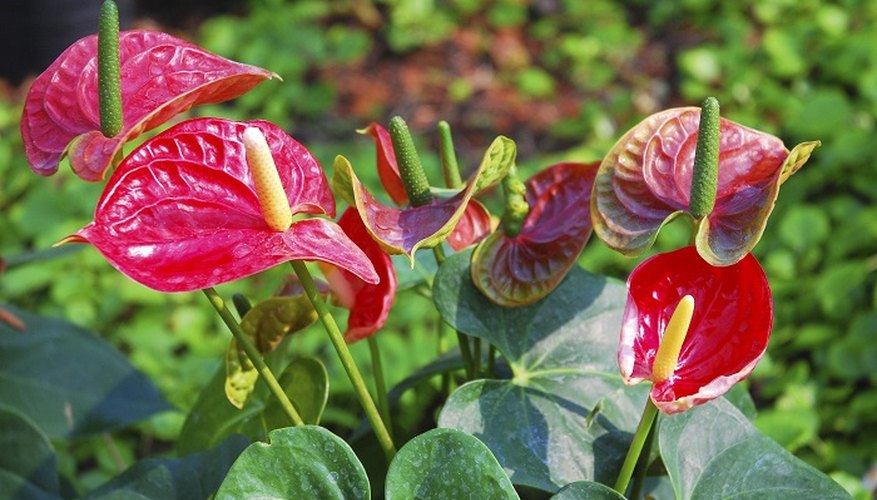Nothing says "tropical" quite like anthurium flowers. Although the most widely cultivated anthurium is red, there are cultivars that bloom in green, pink and white. The waxy, colourful part of the anthurium is called a spathe, the flowers reside along the spadix, which protrudes from the spathe. Native to the tropical rainforest, anthuriums do surprisingly well inside the home.
- Nothing says "tropical" quite like anthurium flowers.
- Native to the tropical rainforest, anthuriums do surprisingly well inside the home.
Place your anthurium in the brightest spot in the house. Although direct sunlight will damage the plant, bright, filtered sunlight will help it thrive. It also requires air temperatures between 20.5 and 24 degrees C (60 to 75F).
Stick your finger 5 cm (2 inches) into the soil in the anthurium's pot. If the soil is dry, water the plant until the water runs out of the bottom of the pot. Allow the soil to dry out to 7.5 cm (3 inches) in the winter.
Clean the anthurium's foliage with a soft cloth. Dust attracts pests, so a monthly wipe will go a long way in keeping the anthurium healthy. Discontinue fertiliser in the winter and begin again when the weather warms in the spring.
- Stick your finger 5 cm (2 inches) into the soil in the anthurium's pot.
- Dust attracts pests, so a monthly wipe will go a long way in keeping the anthurium healthy.
Feed the anthurium with a 15-30-15 fertiliser once a month. Dilute the fertiliser to half the dose specified on the label.
Prune away dead flowers by snipping the stems to the soil.
Treat the anthurium for anthracnose, a common fungal disease, if the spadix turns black. You will need to use a fungicide soil drench, labelled for control of anthracnose. Apply the fungicide according to packet directions.
WARNING
Anthuriums are poisonous if ingested by people or pets.
